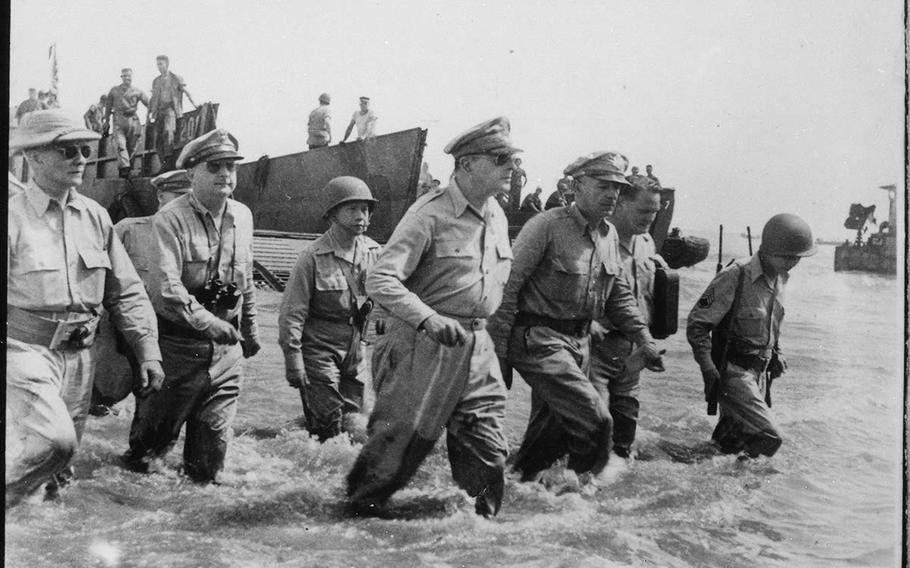The National Archives will soon offer additional army documents from the Second World War online


Army General Douglas MacArthur wades ashore during the initial landings in Leyte, Philippines, in October 1944. (National Archives)
Researchers will soon have digital access to Army unit morning reports from the final year of World War II, which include descriptions of unit locations, award nominations and soldier movements.
The records, transferred to a digital format, include tens of thousands of morning reports sent in 1945, now on microfilm at the National Archives in St. Louis, Missouri. They focus on personnel updates at the company, battalion and brigade levels. The project, which also includes more than a decade of postwar draft cards, was announced this year through a partnership with Ancestry, a private company specializing in genealogy research. All records will be available to the public and were not previously available online.
“They are one of our most popular collections – they are used very frequently locally and requested from all over the world,” said Theresa Fitzgerald, chief of the personnel records division at the National Archives in St. Louis. “They have become an important part of reconstruction and military research.”
Much of this value comes from the detailed information about personnel updates and the physical location of the unit at the time the report was written. This value increased after a 1973 fire at the National Archives’ personnel archives destroyed more than 16 million military personnel records dating from 1912 to 1964, making it difficult for some veterans and their families to prove their service history to receive benefits.
.jpg/alternates/PORTRAIT_350/Morning%20reports%20Jan%2022%201945%201.jpg)
An Army morning report from January 22, 1945, transferred from microfilm to digital format through a partnership between the National Archives and the Ancestry company. The entire year’s reports will soon be available online, providing researchers with information on a unit’s personnel changes during the final year of World War II. (National Archives)
According to the National Archives, more than 100,000 rolls of microfilm containing morning reports were rescued from the burning building.
Using the reports, Fitzgerald said researchers can track a veteran from the time he joins a particular unit until he leaves that unit.
“When they changed units, which happened very often, it was noted in the morning reports and they stopped research at that unit and went to the new one,” she said.
Some even describe minor battles that took place, or make notes about the weather, the geographical environment, encounters with wildlife, or list the towns through which the troops passed.
The unit’s clerk typed the reports on long strips of paper and sent them in batches to the Army, she said. The Army used this form of morning reports until 1974, when it switched to a personnel data card system. The Navy and Marine Corps kept similar records, but in large diaries rather than individual sheets of paper.
Once that dataset is transferred to a digital format, complete morning reports from 1944 to 1946 will be available online, says Quinton Atkinson, senior director of global content acquisition at Ancestry, which has been working with the National Archives on record transfers since 2008.
“These reports are significant both because of their specificity and in the larger historical context in which they were produced,” he said.
The second collection of military records, acquired through the recent partnership with Ancestry, includes nearly 10 million military service registration cards from 1948 to 1959. These cards are another popular collection because each of them includes address, occupation, a basic physical description, and the person’s chosen beneficiary, in addition to the registrant’s basic information.
“That’s pretty normal,” Fitzgerald said. “But I’ve found over the years that the most interesting stories usually come when you meet famous or infamous people.”
Once the process is complete, the records can be accessed through the National Archives website, archives.gov.
Above: An example of more than a decade of military service records that will soon be available online, thanks to a partnership between the National Archives and the company Ancestry. The records can help researchers, especially genealogists, because they contain a man’s address, occupation, marital status, and sometimes a physical description. Photo provided by the National Archives.



